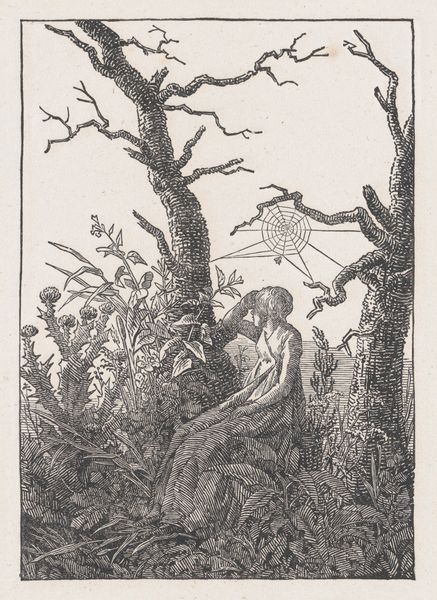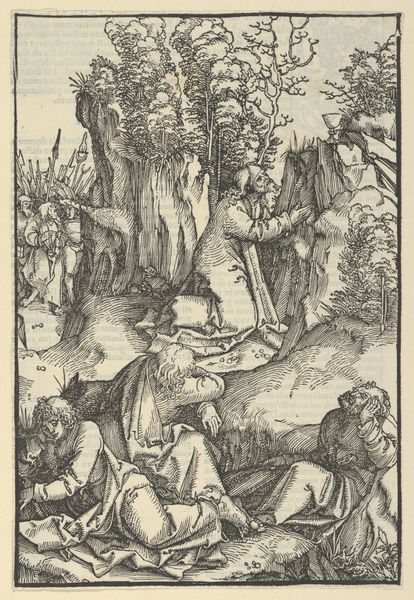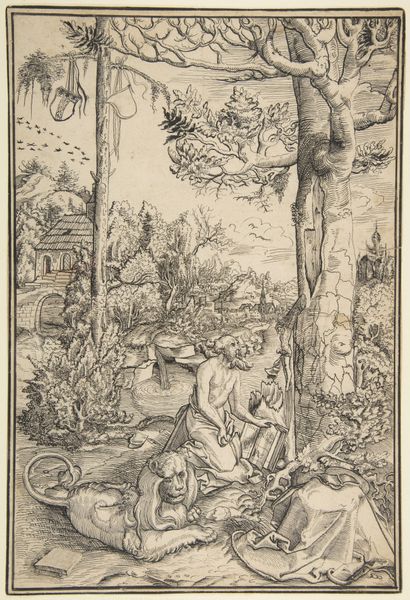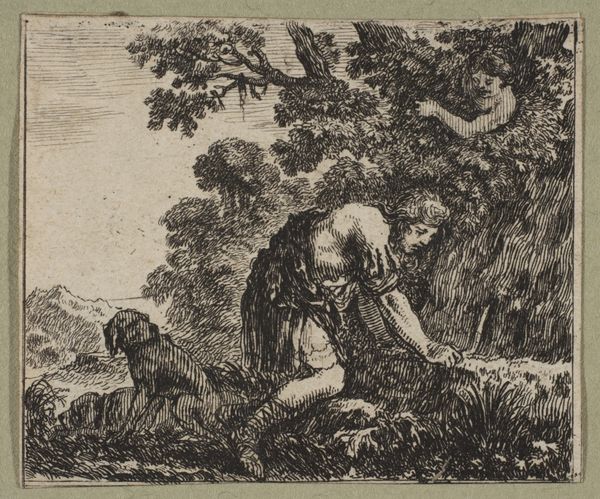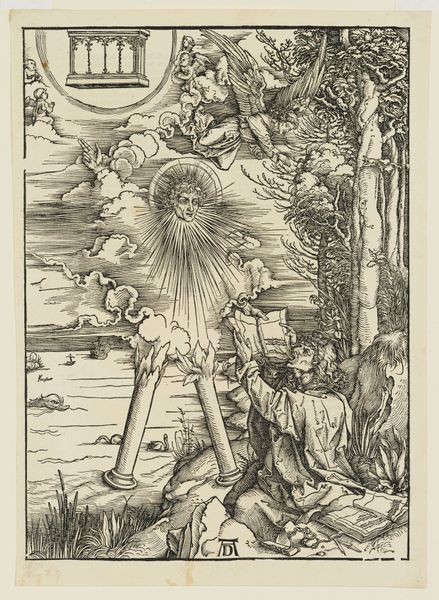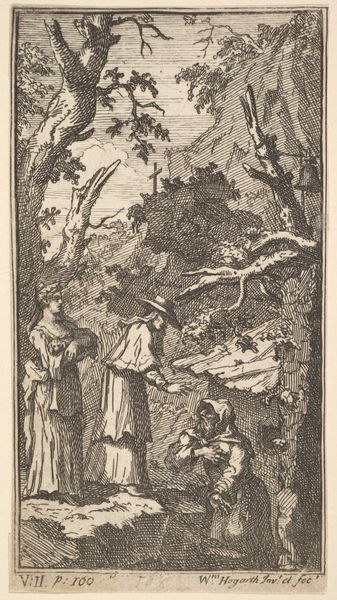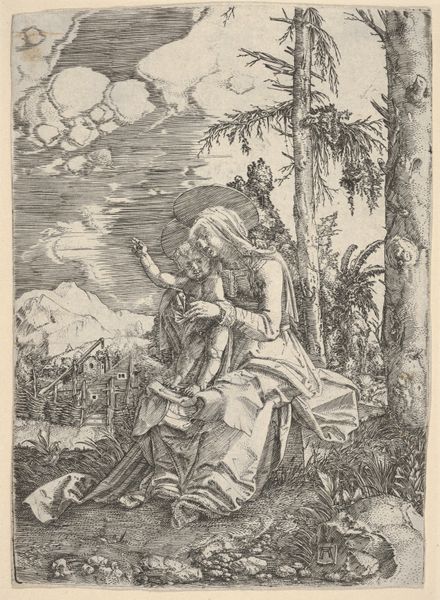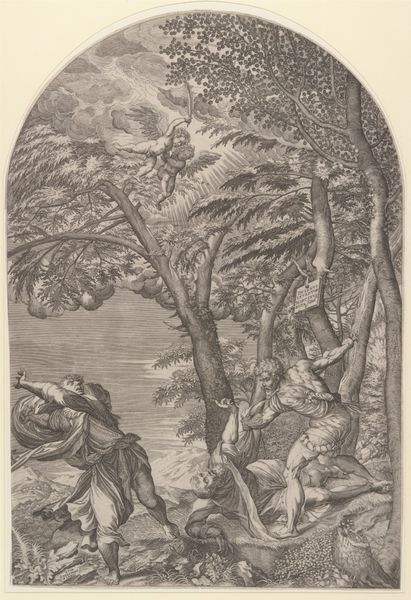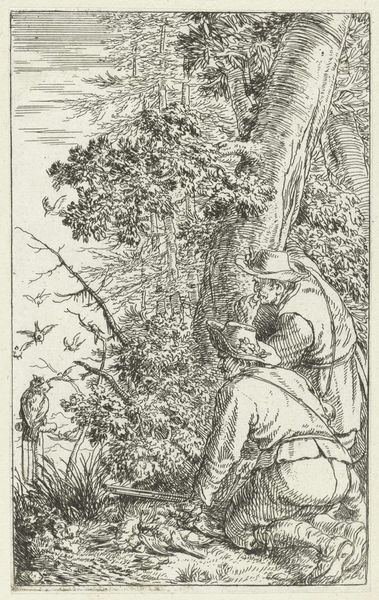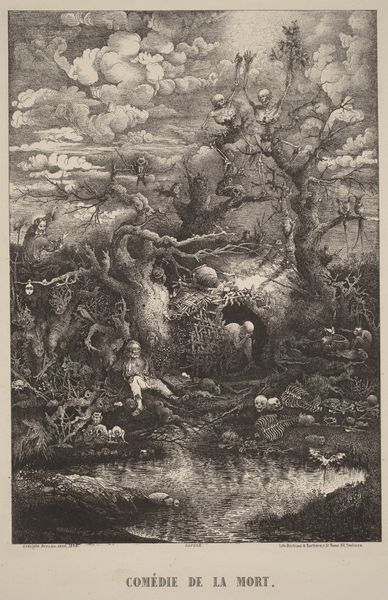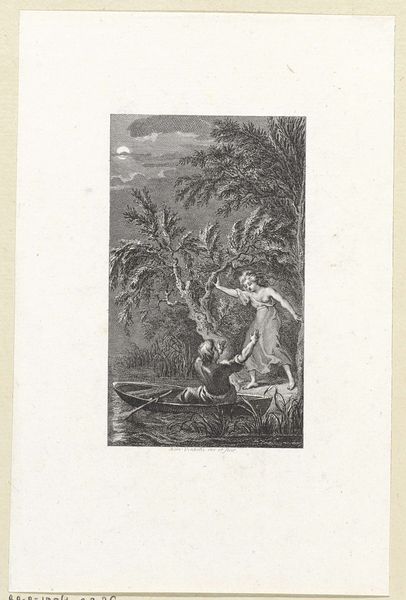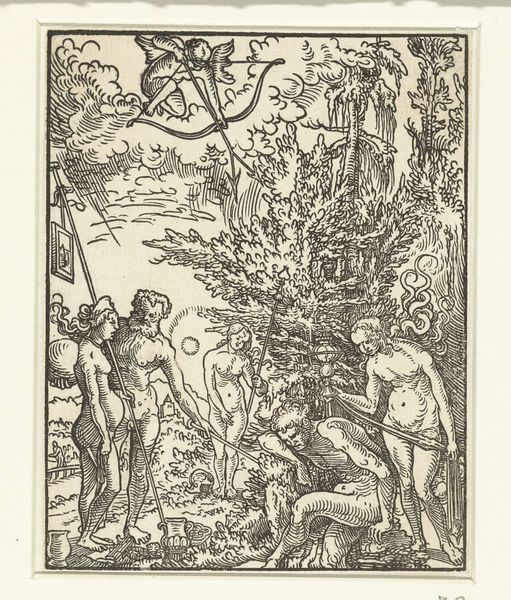
drawing, print, paper, ink
#
drawing
#
pen drawing
# print
#
landscape
#
figuration
#
paper
#
ink
#
romanticism
Dimensions: 170 × 120 mm (image/block); 260 × 193 mm (sheet)
Copyright: Public Domain
Curator: Welcome. Before us, we have Caspar David Friedrich's "Woman with Spider's Web Between Bare Trees," crafted around 1803. This drawing, executed in ink, is currently held at The Art Institute of Chicago. Editor: My immediate reaction is to the stark contrast of its delicate subject matter—a woman lost in thought amid lush foliage—and the severity of the pen and ink work. The effect is rather melancholy, no? Curator: I think that's spot on. It reflects the anxieties of the era. Looking closer, the web becomes symbolic, perhaps alluding to a society ensnared by its own constructs. The female figure, possibly contemplating nature’s grand design or her place within it, reminds us of the evolving role of women in the Romantic period. Editor: Right, and in considering the work's materiality, ink on paper allows for incredible detail – but also for reproduction, which expands accessibility. Does the medium somewhat democratize Friedrich’s Romantic vision? There's something fascinating in this accessible process being used to express ideas of sublimity and individual isolation. Curator: Exactly. The choice of materials, even down to the type of ink, plays into the symbolic narrative Friedrich creates. It’s not merely a depiction of nature but a comment on the human condition within societal landscapes. Editor: It’s interesting, considering the means of its production, this isn't the oil paintings we might associate with Romanticism, but a humble drawing rendered through painstaking detail. It asks us to reflect on where we look for "high art" in social expression. Curator: It compels us to consider how societal forces, visible through materials and artistic decisions, inevitably shape our understanding and the very production of artistic meaning. Editor: It seems this drawing invites us to consider both our material engagement and the societal complexities imbued into every ink stroke, from the production process to how Romantic ideals are shaped by societal dynamics. Curator: Absolutely, viewing this piece not only enriches our appreciation of art history but also provides a framework for dissecting present-day cultural production through a similar intersectional lens.
Comments
No comments
Be the first to comment and join the conversation on the ultimate creative platform.
